- Home
- A. S. Byatt
A Whistling Woman Page 4
A Whistling Woman Read online
Page 4
Frederica the schoolgirl had known she would be someone, had known eyes would be on her, fame would touch her, people would know who she was when she walked down a street. She had wanted everything—love, sex, the life of the mind. She had tried marriage, and had Leo, and made a small living as best she might. Jacqueline thought of herself as a lesser, more shadowy being than Marcus’s brilliant sister. But she was beginning to recognise the inexorable force of her own curiosity, her desire to know the next thing, and then the next, and then the next. It lived in her like a bright dragon in a cave, it had to be fed, it must not be denied, it would destroy her if she did not feed it ... The next thing was to explain as much as was necessary of all this to Lyon Bowman. She wanted to say to Luk “you are too good for me, I won’t ever give you enough attention.” But she knew that silence was better. Luk, she thought hopefully, would transfer all that to someone else, and then they could go on comfortably.
Luk had a repeating dream about Jacqueline. In it she was—some of the time—a brown bird. Most often, she was a bird of that wonderful dusky, brown-black of female blackbirds, and had a sharp gold beak, and gold eyes where her own were brown. Often this bird was more the size of a large pheasant than that of a blackbird, proud and quick. It would appear amongst the Cepea nemoralis where he had been expecting to see the woman, and would busy itself with gathering the shells and piling them on the anvil-stone. He would know (it was a simple dream) that he should not creep up on it, and yet would, and it would watch him, its dark feathered head on one side, its gold beak glittering. Sometimes, not often, it would extract the snails from the shells, and they would dangle, squirming and stretching, from the bill. Once he closed his hands round it, and for a moment it seemed almost to nestle there, warm and feathery. Then he felt its heart go faster and faster, and knew he must let go or kill it, and woke, in the sweat of the decision. It was a very simple dream, he considered. But that wasn’t the point, it couldn’t be reduced to its simple meaning. The brown feathers, the watchfulness, the fine twig-legs, the rapid thrum of the overexcited tiny heart changed him, changed her in him. He thought scientifically about this, too. When she got into the memory-stores of the brain would she find how a woman can become a bird in the skull of a sleeping man?
Chapter 3
The Vice-Chancellor was up early, as usual. He sat behind his vast desk (he was an abnormally tall man, nearly 6 feet 5 inches) and looked out at what he thought of as “his” lawn, knowing it was not. His Lodgings were in one corner of the ground floor of Long Royston Hall, the Elizabethan house given to the new university by its owner, Matthew Crowe, who still inhabited part of it. From one window Sir Gerard Wijnnobel could see the formal terrace where Frederica, in shift and farthingale, had strutted as the young Elizabeth, in Alexander Wedderburn’s Astraea, in 1953. From another, beyond the yew hedge which bordered “his” garden, were grassy slopes and the towers of the University, connected by walkways, plazas, and little canals. He could see the Evolution Tower, a spiral of glass and steel, and the Language Tower, a modified ziggurat, in brick.
He was planning a conference on Body and Mind. His desk was covered with neat lists of possible speakers (and listeners). His mind drove towards inclusiveness. There would be linguists, philosophers, biologists, mathematicians, sociologists, medical men. There would have to be physicists, there would have to be discussion of the way modern physics saw the observer affecting—changing—the observed. Embryologists, psychologists, psychoanalysts, Freudian, Jungian, Kleinian. He smiled at himself. He was desiring a biological-cognitive Theory of Everything, which would not be even remotely possible in his life-time. He supposed he must also include students of religion. He was descended from theologians, Dutch Calvinist and Jewish. He had been in his time both a distinguished mathematician and an innovatory grammarian. He believed strongly that universities should be what their name implied, places for the study of everything. He had, with passion, cunning, and meticulous determination, constructed a revolutionary syllabus for his institution, which required all students to study some science, more than one language, an art form.
Probably there should be artists also at the conference. But for the most part, they talked badly, they explained themselves foolishly and inadequately.
Not that he did not care about art. Across the lawn, which was mazed with shining spider-threads and brilliant with dew, was his Hepworth (purchased by the University, at his instigation). It was a large, pierced white oval stone, strung with crossing wires. He saw the shadow of the threads on the glimmer of the stone, the yew-dark through its centre. He had known Hepworth in Hampstead, in 1938, when he had just arrived from Holland, braced for the war to come. They had talked maths. She had described to him the interest of pierced forms, the way the hole incorporated air and light in the solid stone. She described the sensuous pleasure of working hand and arm into and through a spiralling tunnel.
He saw also a few white fantail pigeons, at the base of the plinth, their breasts pleasantly and fortuitously echoing the curve of the marble. Then he saw his wife’s Abyssinian cat, Bastet, a brindled shadow lurking under lupins. The pigeons took fright and went up. He loved to see them fly and tumble. He loved the light through the creamy-white of their tailfeathers. Those that were left were canny and hardened. They were fit survivors. Bastet had regularly found and devoured their squabs.
He kept his books elsewhere. In his study were his Rembrandt etchings and his Mondrians. Some of the Rembrandts had come with him from Holland, and others he had bought after the war, when they could still be had very cheaply. He specialised in single figures meditating in profound shadows—old men with fine beards, lined and composed old women. His favourite, perhaps, was “Student at a table by candlelight,” with a pit of darkness and a bright small flame. He had Rembrandt’s only etched still life, a conical shell, Conus marmorens, its spiral closest to the onlooker’s eye, its surface patterned like a dark net thrown over bone. He also had a copy of a work known as “Faust in his study.” The old man in his cap looked through gloom at a lit window, where a mystic hand pointed. It pointed at a floating apparition of three concentric circles, scattering brightness. The inmost one was crossed with the Christian INRI in its segments. On the outer ones was written
+ ADAM + TE + DAGERAM + ARMTET + ALGAR + ALGASTNA ++
No one had ever explained this writing. Wijnnobel’s cabbalist grandfather had tried and been baffled, like the rest. He himself had an idea about it, from time to time, but they never worked.
Mondrian, too, had been in Hampstead in 1938 and 1939, painting severe black and white grids with discrete peripheral rectangles of red, yellow and blue. Mondrian believed that everything—the sum of things—could be represented by these three colours, with black, white and grey, within the intersections of verticals and horizontals. The colours were signs, denoting all the colour in the world, symbolising everything, purple, gold, indigo, flame, blood, earth, ultramarine, even green, which Mondrian could not bear to look at. The straight lines represented the refinement of spiritual vision. They were the intersection of the infinite flat horizon, and the infinite vertical, travelling away from earth into the source of light. They avoided the tragic capriciousness of the dreadfully particular curves of flesh, or even of the changing moon. The vertical line was taut, and was the tension in all things. The horizontal line was weight and gravity. The figure of the Cross was the meeting of vertical and horizontal, an intrinsic form of the spirit. The movement of waves on the sea, the form of the starry sky, could be represented with patterns of little crossings. Diagonals, according to Mondrian, were not essentially abstract, and should be eschewed. He had had trouble stabilising the chemistry of his red, and had in fact changed it often. Wijnnobel thought this system was mad in its man-made purity, and yet found it endlessly beautiful in its own implacable terms. There were many triads of “primary” colours, of which, for historical reasons, Mondrian had picked one. It was one vision of necessity, of the building blocks of th
e universe. A theory of everything.
Also, like the Rembrandts, it represented his country in his own mind. A kind of stubborn plainness and exactness, shot through with spiritual extremity. The English amongst whom he lived were averse to extremes. He respected that, but he knew there was danger, as well as power, in their unawareness. He liked Yorkshire, he felt at home here, because it resembled his own land in some ways. But there were differences.
Vincent Hodgkiss, who was Dean of Students, arrived at 9:00 to discuss various matters, including the Body-Mind Conference. (“There should be a more elegant name,” he said. Wijnnobel replied that this one was accurate.) Hodgkiss was a philosopher, a student of Wittgenstein. Wijnnobel admired him because he worked on Wittgenstein’s maths as well as his ideas of language. He was a square-shouldered, spectacled man, balding slowly, who spoke little and carefully. They discussed the form and the composition of the conference. Wijnnobel said he had given further thought to the “star” speakers—primi inter pares—and had two names to put before Hodgkiss. “In your capacity as Dean of Students, as well as in your Conference capacity.”
“I thought,” said Wijnnobel “that we could create a historic encounter—a historic debate—between Hodder Pinsky and Theobald Eichenbaum.”
Pinsky was quite young, American and called his discipline cognitive psycho-linguistics. He used computers to explore what he believed to be the deep and universal structures of linguistic competence. Eichenbaum was elderly, German and called himself an ethologist. He had made delicate studies of imprinting in young dogs, foxes and wolves, had worked on the group behaviour of rats-nests, wolf-packs and shoaling fish. The two shared a belief that certain biological structures were innate, but differed as to what these were, and as to the nature of the learning process, and the growth-patterns of human and other societies. Eichenbaum was suspect because his past was cloudy with compromises with Fascism (he had continued to teach in the Schwarzwald throughout the war and had uncompromising ideas about the survival of the fittest). Pinsky’s politics were democratic—he was a regular presence at the ceremonial burning of draft-papers (not his own, for he was almost blind) and aligned himself with those who wanted to rewrite the constitutions of the universities and jettison much of the accumulated intellectual junk in them. Everything could, in his view, be put together again from scratch, gleaming and almost infinitely improved. Eichenbaum, on the other hand, quoted with approval Konrad Lorenz’s dictum that it takes only two generations to kill a culture that has taken centuries to evolve.
It was difficult to imagine them liking each other. Vincent Hodgkiss said that it was also possible that the students would demonstrate against both of them. Eichenbaum because of what his politics were thought to be, and Pinsky, whose politics were impeccable, because of his uncompromising stand about innate intelligence. He said that he’d been informed that there were students visiting the campus who were not students of the University, but veterans of the Paris protests and the Anti-University.
Wijnnobel said an Anti-University sounded interesting.
“Well, in principle, yes,” said Hodgkiss. “In practice, I believe it is somewhat disorderly and confusing.”
“Do we know,” Hodgkiss asked “if either Pinsky or Eichenbaum would be interested in coming?”
“I took the liberty of writing to both,” said Wijnnobel. “Both were intrigued but cautious. I have their letters, here ...”
He was searching as he spoke in the wire tray on his desk. The papers in it were neatly piled, but as he turned them, his fingers became sticky and blackened. It became clear that the pages had been layered with a kind of oozing black pitch. They came up together, and dripped. Vincent Hodgkiss watched Wijnnobel try to prise the papers apart. He offered to help. Wijnnobel laid one illegible page on his blotter. “How very odd,” said Hodgkiss in his Oxford voice, which some of the northerners found affected. “What can have happened?”
Wijnnobel detached another two illegible pages.
“It looks quite deliberate,” said Hodgkiss, consumed now by pure curiosity. “Do we have a student trickster ...”
“I don’t think so,” said Wijnnobel. “I fear I know the perpetrator. Do not bother yourself with the matter.”
He tapped his black fingertips on the blotter. His face was expressionless. Hodgkiss watched the fastidious fingers detach another illegible paper. He offered a paper handkerchief.
“I hope none of this was of great importance.”
“Some was, some was not. Some personal letters. Pinsky’s latest paper.”
He leaned over to put an envelope in the waste basket. Its black contents had been carefully smoothed and arranged in a pointlessly orderly pile, pinned together with a kitchen skewer.
“Witchcraft?”
“Not exactly. Shall we say, a barbed joke? Please forget this matter. I assure you it is my problem.”
“Certainly,” said Hodgkiss.
When Hodgkiss had left, Wijnnobel went to look for his wife. The messages were from her. They were not the first, and would not be the last. Every now and then they preceded acts of greater violence. The waste paper was frequent and therefore normal. “I have read your letters,” the message ran. “I know.” The pitch, or whatever it was, was new. When his work was hurt, it was serious.
He found her in the guests’ cloakroom, a room with rose-pink curtains and wallpaper sprigged with unreal Jacobean flowers, in pretty pinks, golds and terracotta. She was standing on the closed lavatory, holding a dripping paintbrush. Beside her was one of the Lodgings’ genuine Jacobean chairs on which stood a large can of thick black paint. She had painted two walls and most of the ceiling. There were smears of black paint on the carpet, and a ghostly black naked footprint. She was wearing a shapeless black cotton dress and over it a white, vaguely medical overall, smeared also with black paint. She was a large, heavy woman with dark hair, cut with a square fringe, like an Egyptian painting. She wore gold charm bracelets, on each wrist. On the part of the ceiling which had dried, she had fixed little fluorescent stars, in a pattern. Gerard Wijnnobel worked out that it was the constellation of Scorpio. He stooped in the low doorway.
“What are you doing, Eva?”
“You can see what I am doing. Brightening things. Taking them and cutting them out in little stars. Bringing this mausoleum into the real world.”
“Black is not brightening, Eva,” said Wijnnobel, foolishly and reasonably.
“It is modern, I think, and stylish. I am making a dazzling darkness. I shall put stars all over, over all of it. Cancer here, and Capricorn there. And Aries over the cistern. No one will have anything like it. I am using the few talents I have, for the benefit of this place, which is where I live, indeed where I am the mistress. I thought,” she said, staring at him with large multi-coloured eyes, gold and brown, “that you would be pleased that I had found something creative to do with my time.”
It was always just possible that she really meant what she said.
“I think there are—I think this is a listed house—I think there are things we may and may not do in its rooms—”
“I live here. When I am dead, it will be a matter of a few hours to restore the soulless chintz. I have to live here, Gerard. I would like there to be meaning, even in the bog.”
She made a sweep with the brush. She said “I dreamed of a cavern with the starry heavens for its only ceiling.” She had a heavy mouth, that went down, sadly, at the corners. She said
“You are a person of no imagination, Gerard, a person with a closed soul.”
“Maybe,” said the Vice-Chancellor.
“Love has made his mansion in the place of excrement,” said Eva Wijnnobel. She looked to see the effect of this on him, and a flicker of calculation passed across her face. “Have you had breakfast, my dear? I quite forgot breakfast. We could take it together, and then you could return to your important papers and I to my decorative task.”
Wijnnobel had had breakfast, but said he had not. He
took her hand, and helped her down from the pedestal. Her brush flicked black across his pale blue tie. They went together into the dining-room, where Lady Wijnnobel began to slice wedges of toast too thick for the toaster, humming to herself. There was congealing bacon, in a chafing-dish. Lady Wijnnobel’s dogs, two border collies named Odin and Frigg, shimmied in, agitating their sterns.
“Ask Daddy for some bacon-rind,” said Eva Wijnnobel to Odin, who was wall-eyed like his namesake, with one eye blue and dead, one brown and calculating. Odin was grey-blue and golden, with white ruff and plumed tail. Frigg was black and white. Both were fat, and had the ingratiating squirm of outdoor dogs compelled to sit around in houses. “Mummy hasn’t forgotten you,” said Eva Wijnnobel, handing them bacon and squares of fried bread. “There ought to have been nice fat kidneys for you. I must speak to the cook.”

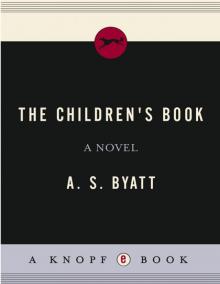 The Children's Book
The Children's Book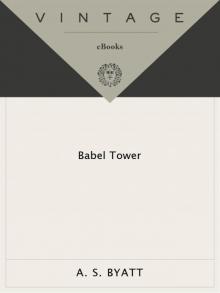 Babel Tower
Babel Tower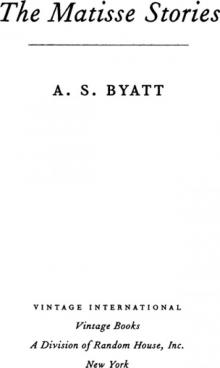 The Matisse Stories
The Matisse Stories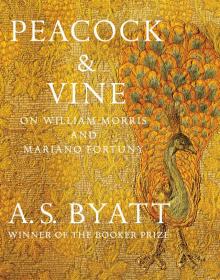 Peacock & Vine: On William Morris and Mariano Fortuny
Peacock & Vine: On William Morris and Mariano Fortuny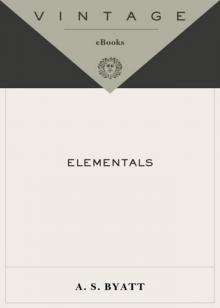 Elementals: Stories of Fire and Ice
Elementals: Stories of Fire and Ice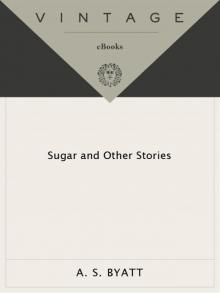 Sugar and Other Stories
Sugar and Other Stories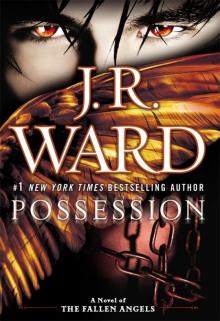 Possession
Possession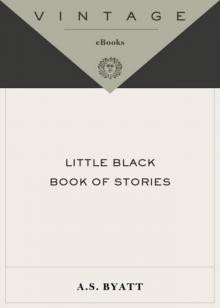 Little Black Book of Stories
Little Black Book of Stories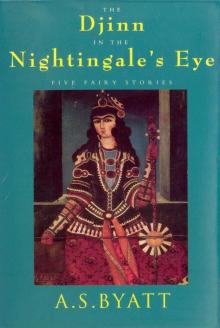 The Djinn in the Nightingale's Eye
The Djinn in the Nightingale's Eye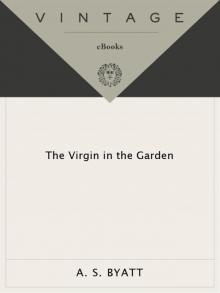 The Virgin in the Garden
The Virgin in the Garden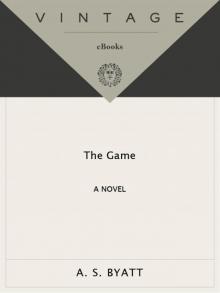 The Game
The Game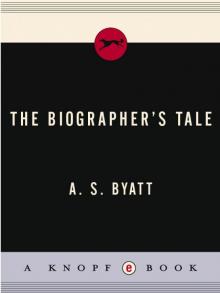 The Biographer's Tale
The Biographer's Tale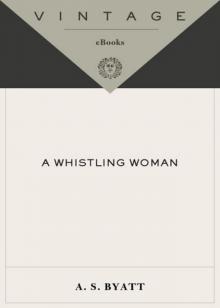 A Whistling Woman
A Whistling Woman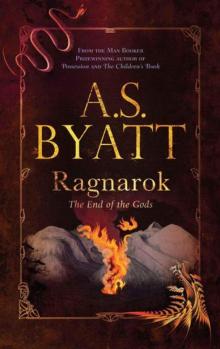 Ragnarok
Ragnarok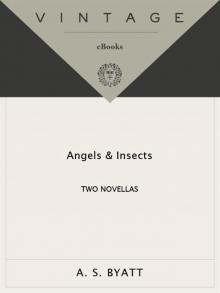 Angels & Insects: Two Novellas
Angels & Insects: Two Novellas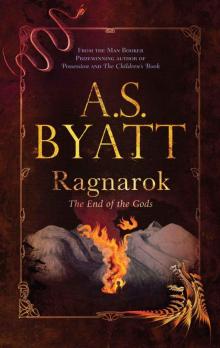 Ragnarok: the End of the Gods (Myths)
Ragnarok: the End of the Gods (Myths)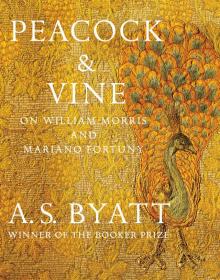 Peacock & Vine
Peacock & Vine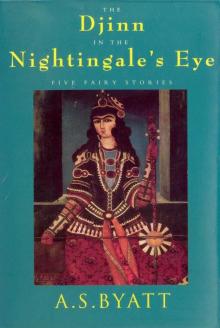 The Djinn in the Nightingale's Eye (Vintage International)
The Djinn in the Nightingale's Eye (Vintage International)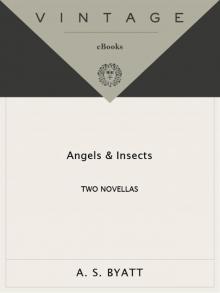 Angels and Insects
Angels and Insects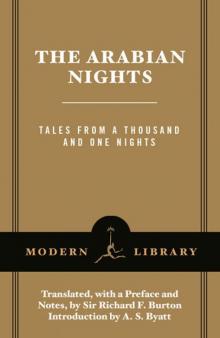 The Arabian Nights: Tales from a Thousand and One Nights (Modern Library Classics)
The Arabian Nights: Tales from a Thousand and One Nights (Modern Library Classics)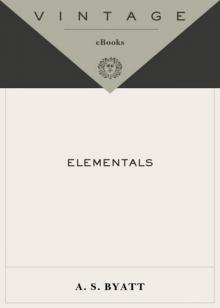 Elementals
Elementals